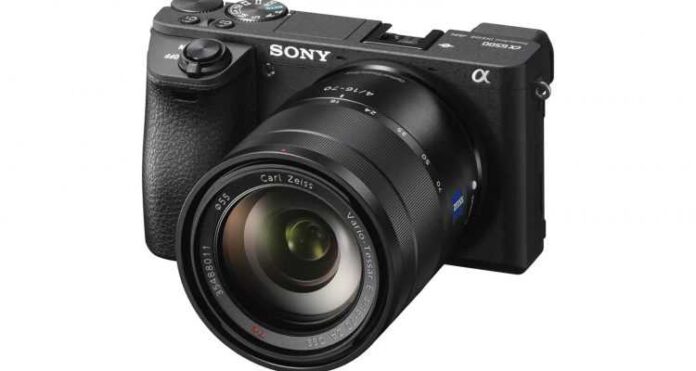The debate between DSLRs and mirrorless cameras have cooled down over the years. Every single iteration of a mirrorless camera series inches closer and closer to the professional quality of DSLRs. The viability of mirrorless cameras is now indisputable.
The popular Sony Alpha a6000 series received its second upgrade this year—the a6500. While enjoying only a few technical changes from the a6300, the a6500 is still a competent shooter in most situations.
Grippy but may be undersized for big hands. The a6500 feels snug with an equally balanced build. Even with my small hands, the camera never felt out of place. However, its compact size may be a problem for bigger hands.
Conventional button layout. In terms of functionalities, the a6500 offers the standard slew of controls and dials. There’s nothing new or out of place. In this scenario, this works in the camera’s favor for familiarity.
Lacks a secondary dial. Since it shares the same layout as its predecessor, it still lacks a secondary dial for exposure and aperture. Aperture can be changed only through a separate dial on the back of the camera. Similarly, ISO is changed through the same dial. While this may not be nuisance to more casual photographers, shooting with this kind of limitation in the field can shave off precious seconds you could be using to shoot subjects.
Great electronic viewfinder. Usually, I prefer optical viewfinders since they offer a more accurate depiction of the scene. Luckily, the a6500’s electronic viewfinder (EVF) is easy on the eyes. In fact, it took me a while to realize that I was starting at a digital screen. The EVF is close to reality and can be augmented with a variety of displays. Additionally, the EVF is located on the top left corner of the camera. It prevents your nose from mashing against the back panel (which may be of help to individuals like James Reid).
Amazing photo quality. Regardless of whether you shoot in RAW or JPEG, the a6500 delivers. Even in Auto, the photos it took were crispy, the colors weren’t too punchy, and the contrast was silky smooth. The camera is also a miracle worker for low light conditions, delivering workable shots even at ISO 25600. It’s also a master of moving targets, aided especially with its extremely fast 11fps burst capability. Even if you aren’t an action/sports photographer, this is a boon for when you have sugar-rushed kids or hyperactive pets.
Difficult RAW conversion. Initially, I had a hard time converting the a6500’s RAW files. At the time, I was using Adobe Lightroom CC, which couldn’t read the files without a driver or a plug-in. This may make it a tad bit difficult for RAW shooters. It’s definitely not a hindrance, just an extra step.
Tilting screen. The a6000 series finally joins the tilting screen trend with a back panel that tilts up and down. It’s also supplemented by touchscreen capabilities. As much as this adds to the camera’s functionalities, they can be more of a luxury than a necessity especially with the features’ limited capabilities. I found myself turning off the touchscreen functions for the most part.
Increased connectivity. Photographers can often disregard the convenience that Wi-Fi and NFC capabilities can produce. Like the retractable screen, the extra connectivity options can be a luxury. However, for on-the-go photographers without immediate access to a laptop, Wi-Fi and NFC can be a savior especially if you need to post photos immediately. I found the connectivity options easy enough to use with only a little bit of a learning curve.
Turbo charge/r. The batteries of mirrorless cameras are one of the most convenient features for a camera. Fitted with a microUSB port, it’s convenient to charge it right from the plug without the need for bulky chargers. The a6500 is no different. Clocking in at 350 to 400 shots, the a6500 lasts more than the usual mirrorless camera. For power users, though, this can deplete rather quickly especially for event coverage days.
VERDICT
A massively capable shooter, the Sony a6500 can make you wish you went mirrorless sooner. While the dominance of DLSRs is still apparent, there’s no doubting the impact that Sony’s mirrorless cameras brings to the table.
| Specifications | |
| Image Sensor | Sony CMOS APS-C |
| Lens Mount | Sony E |
| Effective Megapixels | 24.2 megapixels |
| Focus | Hybrid contrast/phase detection: wide (425 points phase-detection AF, 169 points contrast-detection AF), zone, center, flexible spot, expandable flexible spot |
| Shutter Speed | 30 – 1/4000 |
| ISO | 100 – 25600 |
| Video | Up to 4K resolution |
| Viewfinder | EVF/LCD |
| Display | 3.0” rear display, touchscreen, tilting |
| File Format | JPEG (EXIF 2.3), RAW (14-bit compressed ARW 2.3) |
| Storage | MS PRO Duo, SD, SDHC, SDXC |
| Connectivity | Wi-Fi, NFC, microUSB 2.0 |
| Battery | 350 to 400 shots |

















